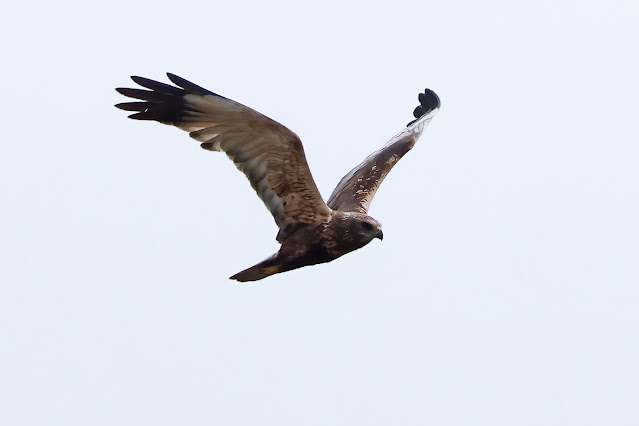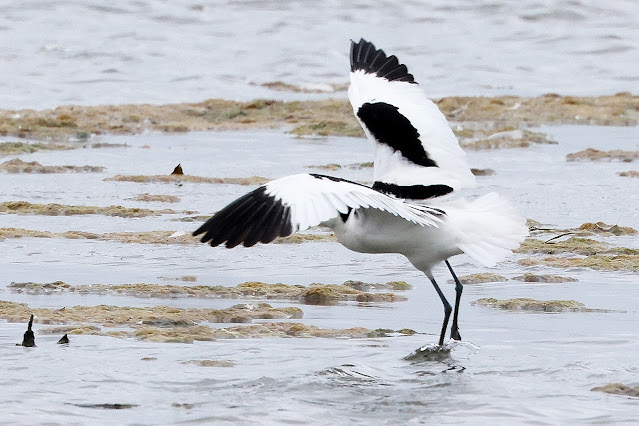16th May 2025
There were just eight species of wader present today starting with the Lapwings which parade on the grass by the path to the small car park. There is amazing iridescence on these birds although it doesn't show off at its best on an overcast day.
Most of the Black-tailed Godwits have gone now with just a handful left. This one is just starting to acquire its summer plumage.
Redshanks are very common here and Frampton is clearly a very important breeding site for them. Everywhere you go you can see or hear Redshanks.
Oystercatchers on the other hand are relatively scarce with just a few pairs present.
There were several Common Sandpipers passing through, although most kept their distance, so only one decent photo.
There were several Little Ringed Plovers present.....................
.....................and one gave a good display of bathing.
Only one Greenshank was seen today which provided a few shots but mainly distant.
Along the sea wall were a few Common Terns, some of which were on or around nests...............
..................and some fishing along the borrow-dyke.
And then a species I'm not sure I've seen at Frampton before, but they are spreading everywhere now, the Mediterrean Gull. This is an adult with a stout crimson bill, a black hood which extends right down to the back of the neck, and pure white wings. They also have a distinctive call which sounds a bit like a cat.
Here is a good comparison with an adult Black-headed Gull which has a thinner dark red bill, a chocolate brown hood as opposed to black that only extends to the top of the head, and black tips to the wings.
Also flying along the sea wall was a male Marsh Harrier, hunting over the saltmarsh.
Today there were just four Spoonbills, very few compared to the 40+ a couple of years ago, but that was possibly a different time of year. Here are three of them being photo-bombed by a Black-tailed Godwit.
In my experience Spoonbills at Frampton spend most of their day sleeping and preening, with the occasional spell of feeding.
This is an adult with no black tips to the wings and the orange on the bill confined to the spatula.
These are juvenile birds due to the black wing-tips.
So what about the eighth wader? Well, the eighth wader is the Avocet and everywhere you looked you could see birds sitting on nests.
Here two chicks are huddled in the breast feathers of the mother making her look like a six-legged Avocet.
Before the Second World War there were no Avocets breeding in the UK. Then after the start of the war Havergate Island in Suffolk was left unattended and it is believed this resulted in the failure of the sluices that had been installed to prevent the island from flooding and being reclaimed by the tide. The walls and embankments eventually collapsed and this allowed the island to be flooded in several places.
Far from being a total disaster, this resulted in perfect conditions for a bird that hadn't bred in the UK for 100 years, the Avocet. Incredibly Avocets were discovered nesting on the island, which led the RSPB purchasing Havergate in 1949.
Reg Partridge was appointed as the island's first warden and promptly began the task of rebuilding the river walls and creating the lagoons that can now be seen today and which are enjoyed by a wide variety of wildlife including wetland species such as Avocets, Spoonbills, Curlews and many others.
Avocets are now found in just about every bit of wetland in the UK and last year at Frampton there were no less than 147 pairs!!!
Well what a fantastic Day 1 with Mark and Stuart, and also thanks to Chris and James for my birtday present. So what now? Well, off for a curry and a couple of beers of course.

















































No comments:
Post a Comment
Note: only a member of this blog may post a comment.